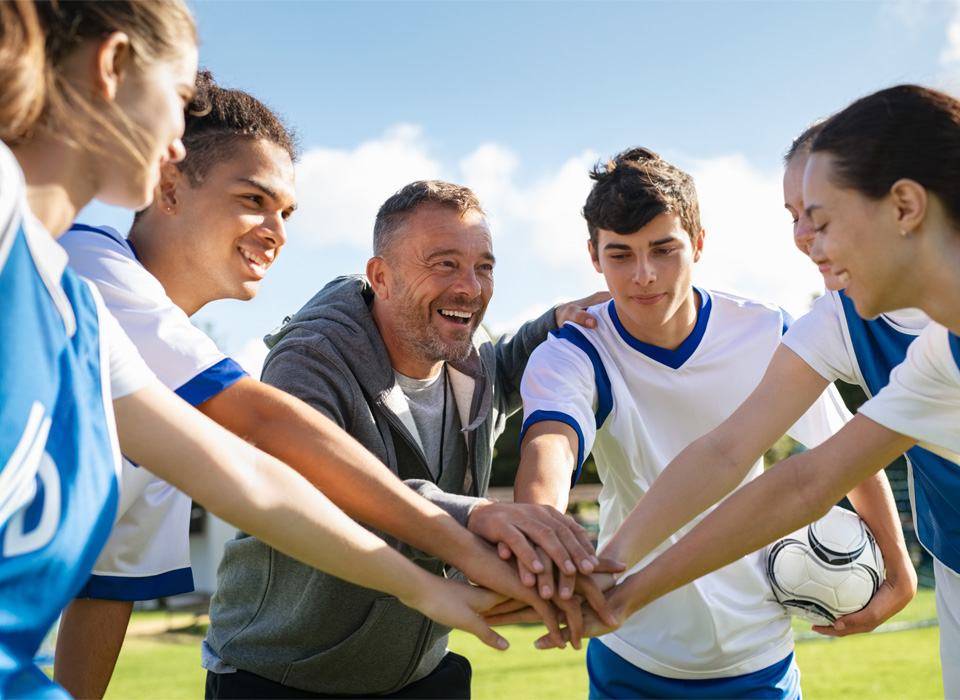Mike D’Antoni, coach for the Houston Rockets once stated firmly that above all other player stats he receives he wished he had an objective measure for when his athletes could get injured. Speed, strength, power, endurance, even “game sense” don’t matter if your athlete is sidelined for injury. While there is no catch all objective measure for when or how athletes will become injured, there are some definite warning signs that coaches, trainers, and ATCs should watch out for when reviewing their athletic development protocols.
Mechanics
Poor body alignment is one of the most correlated measures coaches have to predict injury potential among their players. Common alignment issues include:
- greater than 10% unilateral discrepancy in strength and mobility from body part to body part.
- Excessive knee valgus during jumping, landing, or squatting
- Inability to flex at the hips while standing and reach to the ankles (back rounding indicates poor mechanics).
Pro tip: Ask your athletes to do 3 tasks, each 60 seconds long: as many pushups as possible, as many 2 footed jumps as possible, touch their toes while standing. Look for symmetry through fatigue during the pushups, knee valgus during the jumps, and depth of reach plus curvature of the spine during the toe touch. Fatigue during these tests is just fine, but mechanical compensation indicates a likelihood for future injury.
Specificity
No athlete should play any game year round. There needs to be an off season of at least 8 weeks somewhere in the year and if the athlete is under 17 for males or 14 for females, they should be playing multiple sports throughout the year to allow their body do develop congruently. Warning signs for excessive specificity include:
- Playing the same sport year round
- Performing the same training routine (running, weight training, stretching/yoga, swimming, etc.) year round
Pro tip: Offer your athletes and parents a simple annual calendar with general segments: training time, practice time, competition time, rest time. Each segment should last about 3 months.
Fatigue
When an athlete is fatigued, everything breaks down. Strength and flexibility diminish, reaction decreases, even cognitive awareness falls up to 80% from normal. The challenge, of courses is that fatigue properly pushed can win championships. What coaches should look out for more than physical fatigue is mental fatigue. If an athlete doesn’t possess the mental fortitude to find their “second and third wind” or to “dig deep”, they are much more at risk than they would be with strong motivation. To minimize mental fatigue in sport, coaches can:
- Avoid excessive physical stress during traditional times of mental stress like examination weeks.
- Simplify drills and tasks when athletes are expected to be fatigued in practice.
- Give fun breaks in the routine during which athletes can play, bond, and otherwise goof around playing games that don’t matter or improving skills that don’t have an outward goal.
Pro tip: Have a sports drink and sliced oranges around for athletes to consume to help alleviate momentary cellular fatigue. Don’t be afraid to program in “easy days” they can be fun, a morale booster, and minimize team wide illness. Have fun!
Sleep
Going along with overall fatigue, assessing an athlete’s sleep will help to tell trainers, coaches and parents how well a physical body is recovering. Most of the body’s healing processes occur at night and without regular sleep, athletes will be missing out on this essential process. On occasion the rigors of sport, school, and work will over-stress an athlete’s system. A stressed out system will not recover. Some indicators that athletes are not getting enough sleep include:
- Inability to focus
- Consistent muscle soreness that won’t go away
- Decreased objective performance despite increased training rigor
Pro tip: Ask your athletes how well they sleep. Give them a weekly assessment looking for total hours of sleep (should be close to 7×8=56hrs) and ask them how rested they feel on a 1(not at all) to 5(completely) scale.
While not all injuries can ever be avoided in sport, there are many things coaches, trainers, and parents can do to help minimize the likeliness for injury!
